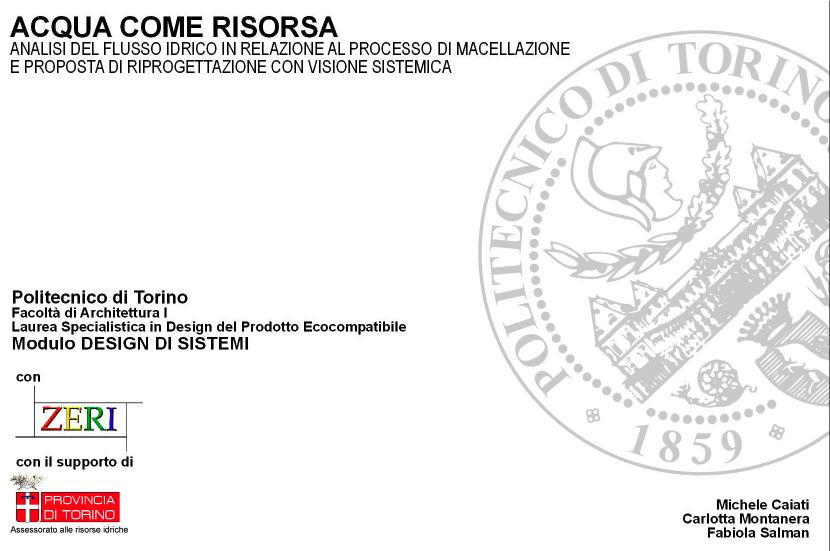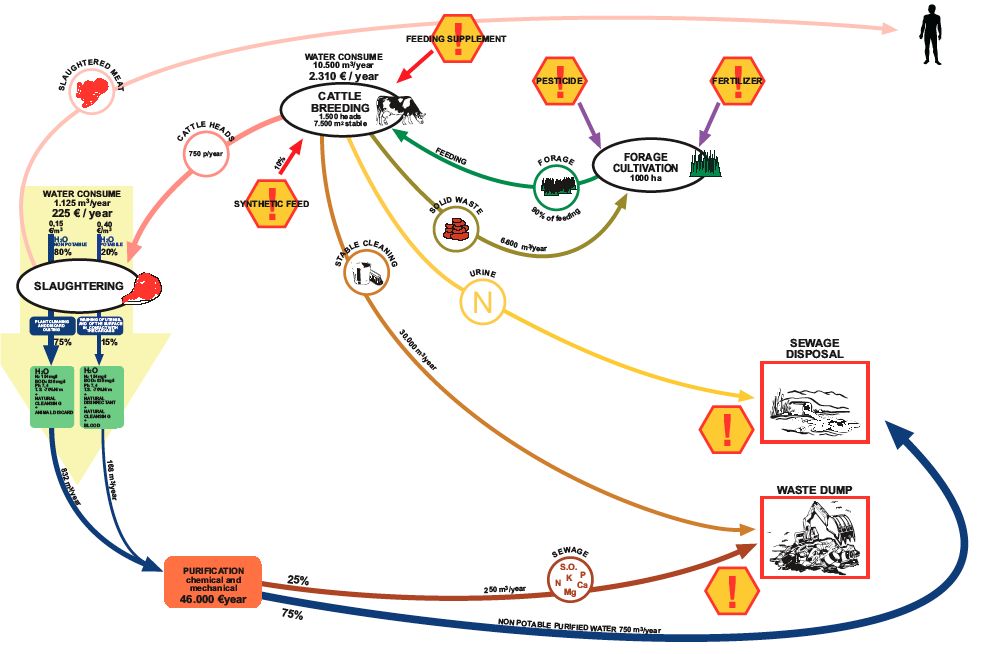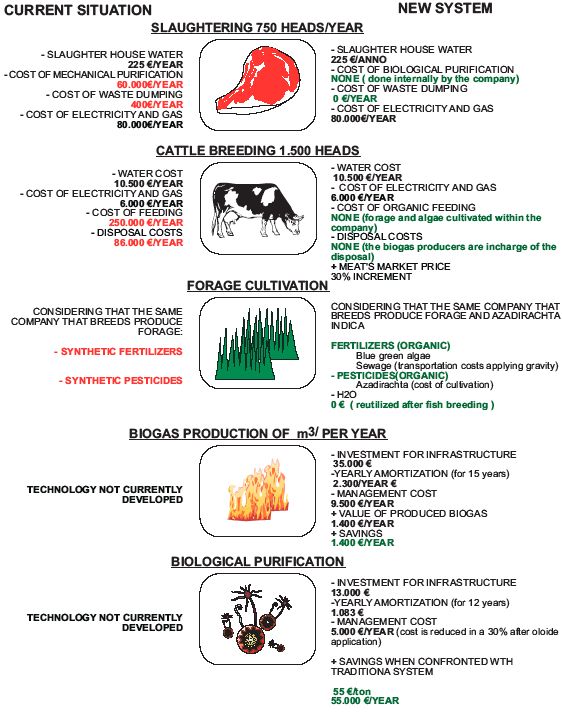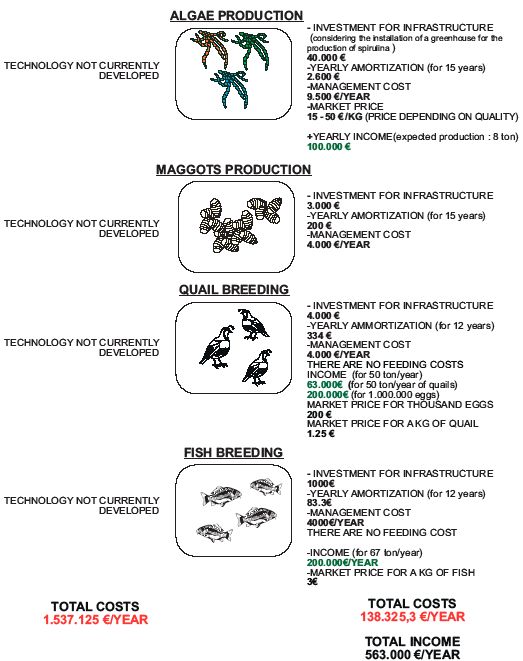Integrated Food and Waste Management System: Difference between revisions
m (delete leading space to avoid sidescrolling) |
(Added a Category to the Page) |
||
| (34 intermediate revisions by 5 users not shown) | |||
| Line 1: | Line 1: | ||
=Introduction= | =Introduction= | ||
[[File:Energy cascade OSE.jpg|500px|thumb|right|Cascading use of energy: the residues of one process are the feedstock for the next process in the chain, which is again linked to another process, and so on, until most of the original bio-energy has been consumed. | |||
Example: [[silage]] is fed to cattle, then cattle manure is consumed by [[Black Soldier Fly]] larvae. The leftovers from this process are used in [[vermicomposting]]. ]] | |||
[[Image:IFWMS_intro.jpg]] | Integrated Food and Waste Management System (IFWMS) (also known as [https://en.wikipedia.org/wiki/Zero_waste_agriculture “Zero Waste Agriculture”]) is a type of sustainable agriculture which optimizes the use of energy and nutrients in a synergistic integrated cycle of profit making processes where the waste of each process becomes the feedstock for another process. One of the key people who developed the concept was the late Prof George Chan of [http://www.zeri.org/ Zero Emissions and Research Initiatives (ZERI)]. | ||
Aspects may include: optimization of food production in an ecological sound manner, reduction in water consumption through and recycling and reduced evaporation, energy security through biomethane (biogas) and biodiesel (micro-algae) as by-products of food production, provides climate change relief through the substantial reduction in greenhouse gas emissions compared to traditional agriculture with fossil fuel usage, reduction of pesticide use through biodiverse farming and integrated pest management. A larger conglomerate of complex IFWMSs can be found in an [[Eco-Industrial Park]]. The IFWMS principle is also incorporated extensively in [https://en.wikipedia.org/wiki/Eco-cities Eco-Cities]. | |||
=Project at the University of Turin= | |||
OSE assessment: ''Integrated food systems are desirable. Here is a high level proposition. As ecological collapse moves forward, here is a regenerative proposition, which is worth pursuing and developing at all scales.'' | |||
[[Image:IFWMS_intro.jpg|width=650px]] | |||
==Current Production Methods: Need to be Improved== | |||
= | [[Image:not_IFWMS.jpg|width=650px]] | ||
= | ==The Integrated System Proposition== | ||
[[Image:IFWMS2.jpg]] | [[Image:IFWMS4.jpg|width=650px]] | ||
==Economic Analysis== | |||
[[Image:IFWMS2.jpg|width=650px]] | |||
[[Image:IFWMS3.jpg|width=650px]] | |||
=Biogas Powered Cars= | =Biogas Powered Cars= | ||
Compressed biogas from IFWMS can be used to power cars. See this: [http://www.i-sis.org.uk/Waste-Powered-Cars.php] - this is from ISIS, who have tried Dream Farm 2 as a model IFWMS. | |||
*See [[CNG]] | |||
=Videos= | |||
<html> | |||
<iframe src="https://player.vimeo.com/video/65674283" width="640" height="360" frameborder="0" webkitallowfullscreen mozallowfullscreen allowfullscreen></iframe> | |||
<iframe width="420" height="315" src="https://www.youtube.com/embed/0fFIg5WLnm0" frameborder="0" allowfullscreen></iframe> | |||
</html> | |||
=Discussion= | =Discussion= | ||
1.9.09 - Integration is not easy. For the entire system to work - major, diverse infrastructure requirements exist. These may include water-tight storage vessels, ponds, vats, earth structures, containers, etc. - which at a large scale, require significant startup capital, heavy equipment and large-scale planning to implement. Materials handling is a huge requirement. Because of the above difficulties and others, traditional farming remains at monoculture. | |||
One of the main keys to diversified farming is availability of equipment - which is being addressed by the [[Global Village Construction Set]]. With basic earth moving equipment available, Factor e Farm will be implementing a system in 2009. Capacities include earth moving, pond digging, lumber generation for rot-resistent containers, and soil preparation equipment. Next in line is the genetic base. | |||
Many proposed IFWMS concepts include [[biogas]] as a central component. Some criticism has been leveled against this because of its relative energy-inefficiency, for example in [https://dl.dropboxusercontent.com/u/22013094/Paper/Summaries/Alternative%20to%20Biodigestion.pdf this extensive discussion ("An Unconventional Way of Raising Pigs, Chickens and Cows")] by Dr. Paul Olivier of [http://www.epwt.net/ EPWT]. | |||
=Rasmus Kiehl 2009 collection= | |||
A large number of additional IFWMS diagrams were made by OSE contributor Rasmus Kiehl while working on the OSE wiki in 2009. This material has been archived at: | |||
http://opensourceecology.org/wiki/IFWMS-Kiehl2009Archive | |||
=Links= | |||
*Wikipedia: [https://en.wikipedia.org/wiki/Zero_waste_agriculture Zero Waste Agriculture], [https://en.wikipedia.org/wiki/Integrated_farming Integrated Farming] and [https://en.wikipedia.org/wiki/Integrated_multi-trophic_aquaculture Integrated multi-trophic aquaculture] | |||
*[https://sites.google.com/site/edenspaceproject/terms-definitions/appropriate-tech/sustainable-agriculture/integrated-farming EdenSpace Project: "Integrated Farming"] | |||
*Project by ZERI - Brewery in Namibia: [http://www.zeri.org/ZERI/Beer.html here] and [http://www.yesmagazine.org/issues/money-print-your-own/brewing-a-future-zero-emissions-in-namibia here (Yes Magazine article)] | |||
*FAO paper: [http://www.fao.org/docrep/013/i2044e/i2044e.pdf "Making Integrated Food-Energy Systems Work for People and Climate - An Overview"] | |||
*[http://www.flowman.nl/Integrated%20Bio-Systems%20%20A%20Global%20Perspective.htm "Integrated Bio-Systems : A Global Perspective"] | |||
* Modeling software from the USDA (.pdf paper): [https://www.ars.usda.gov/SP2UserFiles/Program/212/LivestockGRACEnet/IFSM.pdf "The Integrated Farm System Model: Software for Evaluating the Performance, Environmental Impact and Economics of Farming Systems"] | |||
* [[Waste System Design Guide]] | |||
[[Category:Food and Agriculture]] [[Category: Soil and compost]] [[Category: Waste Management]] | |||
Latest revision as of 23:07, 26 November 2020
Introduction
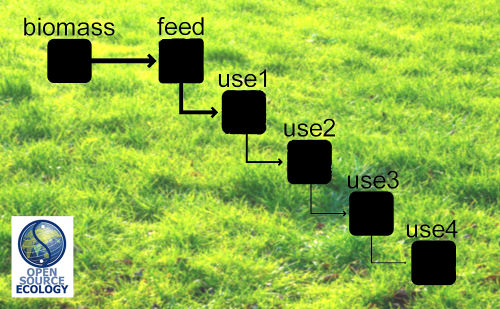
Integrated Food and Waste Management System (IFWMS) (also known as “Zero Waste Agriculture”) is a type of sustainable agriculture which optimizes the use of energy and nutrients in a synergistic integrated cycle of profit making processes where the waste of each process becomes the feedstock for another process. One of the key people who developed the concept was the late Prof George Chan of Zero Emissions and Research Initiatives (ZERI).
Aspects may include: optimization of food production in an ecological sound manner, reduction in water consumption through and recycling and reduced evaporation, energy security through biomethane (biogas) and biodiesel (micro-algae) as by-products of food production, provides climate change relief through the substantial reduction in greenhouse gas emissions compared to traditional agriculture with fossil fuel usage, reduction of pesticide use through biodiverse farming and integrated pest management. A larger conglomerate of complex IFWMSs can be found in an Eco-Industrial Park. The IFWMS principle is also incorporated extensively in Eco-Cities.
Project at the University of Turin
OSE assessment: Integrated food systems are desirable. Here is a high level proposition. As ecological collapse moves forward, here is a regenerative proposition, which is worth pursuing and developing at all scales.
Current Production Methods: Need to be Improved
The Integrated System Proposition
Economic Analysis
Biogas Powered Cars
Compressed biogas from IFWMS can be used to power cars. See this: [1] - this is from ISIS, who have tried Dream Farm 2 as a model IFWMS.
- See CNG
Videos
Discussion
1.9.09 - Integration is not easy. For the entire system to work - major, diverse infrastructure requirements exist. These may include water-tight storage vessels, ponds, vats, earth structures, containers, etc. - which at a large scale, require significant startup capital, heavy equipment and large-scale planning to implement. Materials handling is a huge requirement. Because of the above difficulties and others, traditional farming remains at monoculture.
One of the main keys to diversified farming is availability of equipment - which is being addressed by the Global Village Construction Set. With basic earth moving equipment available, Factor e Farm will be implementing a system in 2009. Capacities include earth moving, pond digging, lumber generation for rot-resistent containers, and soil preparation equipment. Next in line is the genetic base.
Many proposed IFWMS concepts include biogas as a central component. Some criticism has been leveled against this because of its relative energy-inefficiency, for example in this extensive discussion ("An Unconventional Way of Raising Pigs, Chickens and Cows") by Dr. Paul Olivier of EPWT.
Rasmus Kiehl 2009 collection
A large number of additional IFWMS diagrams were made by OSE contributor Rasmus Kiehl while working on the OSE wiki in 2009. This material has been archived at: http://opensourceecology.org/wiki/IFWMS-Kiehl2009Archive
Links
- Wikipedia: Zero Waste Agriculture, Integrated Farming and Integrated multi-trophic aquaculture
- EdenSpace Project: "Integrated Farming"
- Project by ZERI - Brewery in Namibia: here and here (Yes Magazine article)
- FAO paper: "Making Integrated Food-Energy Systems Work for People and Climate - An Overview"
- "Integrated Bio-Systems : A Global Perspective"
- Modeling software from the USDA (.pdf paper): "The Integrated Farm System Model: Software for Evaluating the Performance, Environmental Impact and Economics of Farming Systems"
- Waste System Design Guide
